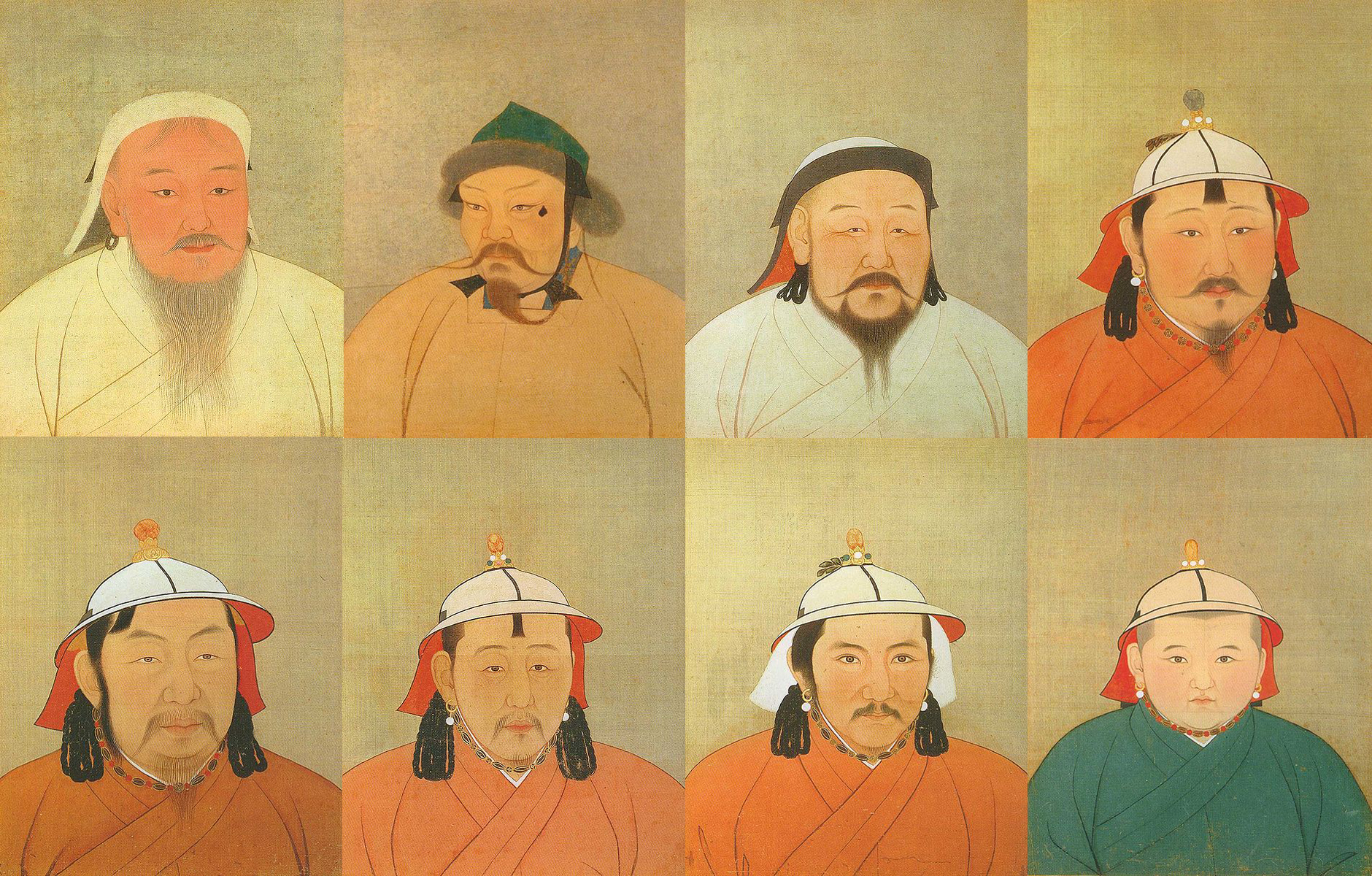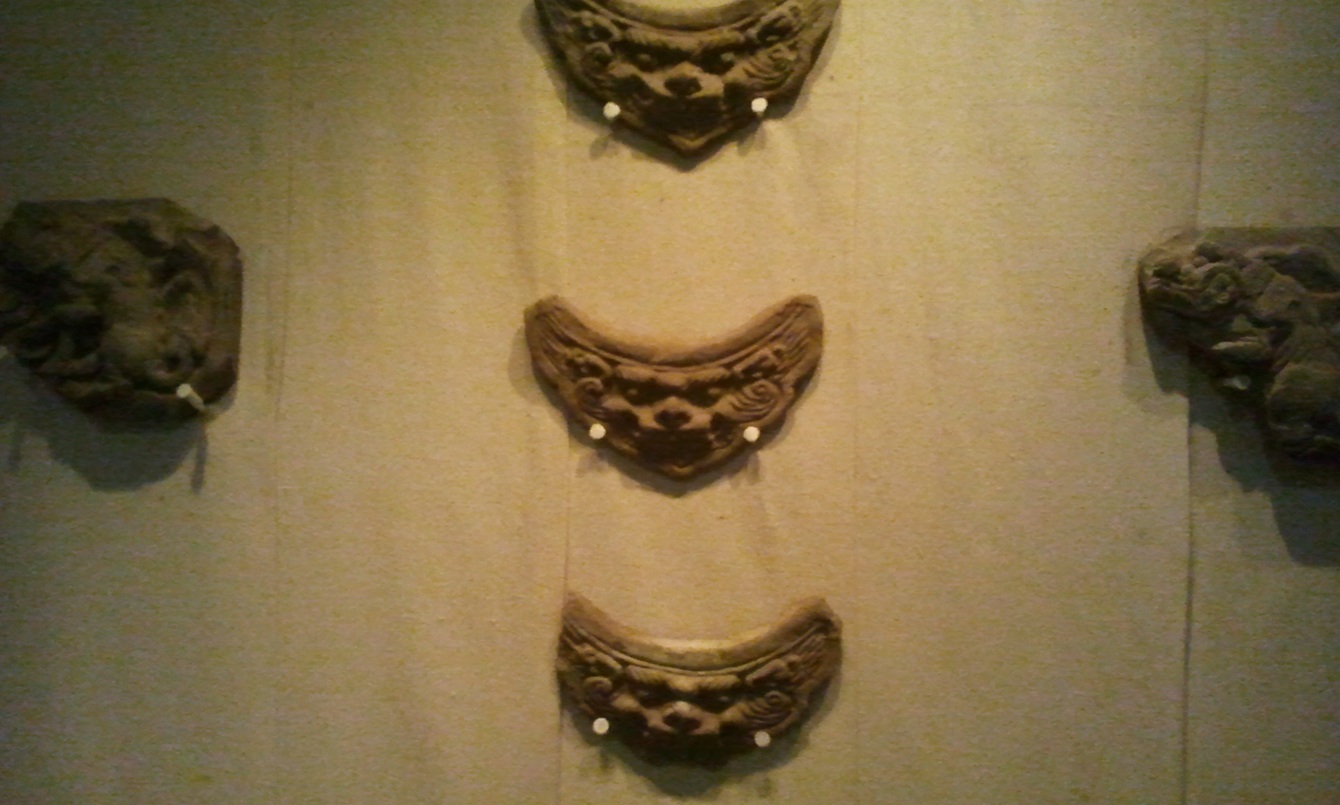|
GöktĂŒrk Civil War
The GöktĂŒrk civil war or Turkic interregnum was a number of political crises in the Turkic Khaganate first between 583 and 603, which resulted in the split of the khaganate into Western and Eastern. Background The Turkic Khaganate was an empire stretching between the Manchuria and the Black Sea. The name of the ruling clan was Ashina. The khagans were appointed by the '' kurultay'' (council of tribe leaders), normally from the sons, brothers of nephews of the last ruler. Beginning of the interregnum In 581, the fourth khagan, Taspar Qaghan, died. There were four claimants to the throne. The personal and regnal names are shown below: Bumin founded the dynasty and was followed in succession by his three sons: Issik, Muqan and Taspar. Prince Anlo was Taspar Qaghan's son, Talopien (Apa Qaghan) and Shetu (Ishbara Qaghan) were Taspar's nephews, while Tien-chueh (Tardu) was Taspar's cousin. (''see'' GöktĂŒrk family tree) Before dying, Taspar Qaghan had announced his prefe ... [...More Info...] [...Related Items...] OR: [Wikipedia] [Google] [Baidu] |
Khagan
Khagan or Qaghan (Middle Mongol:; or ''Khagan''; ) or zh, c=性æ±, p=DĂ hĂĄn; ''KhÄqÄn'', alternatively spelled KaÄan, Kagan, Khaghan, Kaghan, Khakan, Khakhan, Khaqan, Xagahn, Qaghan, Chagan, ÒĐ°Đœ, or Kha'an is a title of empire, imperial rank in Turkic languages, Turkic, Mongolic languages, Mongolic, and some other languages, equal to the status of emperor and someone who rules a khaganate (empire). The female equivalent is Khatun. It may also be translated as "Khan (title), Khan of Khans", equivalent to King of Kings. In Bulgarian, the title became known as ''Khan'', while in modern Turkic, the title became ''Khaan'' with the ''g'' sound becoming almost silent or non-existent; the ''Ä'' in modern Turkish language, Turkish ''KaÄan'' is also silent. After the division of the Mongol Empire, monarchs of the Yuan dynasty and the Northern Yuan held the title of ''Khagan''. ''KaÄan, Hakan'' and ''Kaan'', Turkish language, Turkish equivalents of the title are common Tur ... [...More Info...] [...Related Items...] OR: [Wikipedia] [Google] [Baidu] |
Tardu
Tardu or Tardush Yabghu was the second yabghu of the Western Turkic Khaganate (c. 575â603), and ninth Khagan of the First Turkic Khaganate (599â603). He was the son of IstĂ€mi. Names The regnal name in Turkic was TarduĆĄ (), Medieval Greek: , , Pinyin: , WadeâGiles: , personal name: , , ). According to Lev Gumilev his personal name was Kara-Churin-Turk (ĐĐ°ŃĐ° ЧŃŃĐžĐœ ĐąŃŃĐș).Lev Nikolayrviç Gumilev: ''Eski TĂŒrkler ''(trans. D.Ahsen Batur) Selenge yayınları, Ä°stanbul, 2002 p. 140, 550 However, when he subjugated the eastern half after the death of Tulan Qaghan, he assumed the regnal name Bilge (Wise) Khagan. Background The Turkic Khaganate was a vast khaganate (empire); from Manchuria and the Great Wall of China to the Black Sea. It was impossible to govern the whole khaganate from a certain capital. So while the eastern part was directly ruled by the ''khagan'' (emperor), the western part was governed by the '' yabghu'' (vassal) on behalf of the ''khaga ... [...More Info...] [...Related Items...] OR: [Wikipedia] [Google] [Baidu] |
Bukhara
Bukhara ( ) is the List of cities in Uzbekistan, seventh-largest city in Uzbekistan by population, with 280,187 residents . It is the capital of Bukhara Region. People have inhabited the region around Bukhara for at least five millennia, and the city has existed for half that time. Located on the Silk Road, the city has long served as a center of trade, scholarship, culture, and religion. Bukhara served as the capital of the Khanate of Bukhara, Emirate of Bukhara and later Bukhara Peopleâs Soviet Republic. It was the birthplace of the scholar Imam Bukhari. The city has been known as "Noble Bukhara" (''BukhÄrÄ-ye sharÄ«f''). Bukhara has about 140 architectural monuments. UNESCO has listed the historic center of Bukhara (which contains numerous mosques and madrasas) as a List of World Heritage Sites in Uzbekistan, World Heritage Site. Names The exact name of the city of Bukhara in ancient times is unknown. The whole Oasis of Bukhara, oasis was called Bukhara in ancient times, ... [...More Info...] [...Related Items...] OR: [Wikipedia] [Google] [Baidu] |
Poykent
Paykend or Poykent (), an ancient city in Uzbekistan, is located in the lower stream of Zarafshan River and was one of the largest cities of the Bukhara oasis. The city consisted of a citadel, two settlements, and a ''rabod'' (suburb). Paykend is currently under consideration for inscription as a UNESCO World Heritage site. History In the early eight century, the city was a great trade center and was protected by great mudbrick walls and an inner citadel. When the Arab conquests reached the region in the eight century, the population were forced to pay tribute. However, they rebelled in 706, according to some stories due to the Arab governor trying to take advantage of a local girl or possibly simply as the inhabitants did not want to pay tribute any more. The Arab governor of Khurasan, Qutayba ibn Muslim, decided to set an example and besieged the city. He undermined the walls and though the miners died during the collapse of the wall, the city fell. In the aftermath, all fighti ... [...More Info...] [...Related Items...] OR: [Wikipedia] [Google] [Baidu] |
Sui Dynasty
The Sui dynasty ( ) was a short-lived Dynasties of China, Chinese imperial dynasty that ruled from 581 to 618. The re-unification of China proper under the Sui brought the Northern and Southern dynasties era to a close, ending a prolonged period of political division since the War of the Eight Princes. The Sui endeavoured to rebuild the country, re-establishing and reforming many imperial institutions; in so doing, the Sui laid much of the foundation for the subsequent Tang dynasty, who after toppling the Sui would ultimately preside over golden ages of China, a new golden age in Chinese history. Often compared to the Qin dynasty (221â206 BC), the Sui likewise unified China after a prolonged period of division, undertook wide-ranging reforms and construction projects to consolidate state power, and collapsed after a brief period. The dynasty was founded by Emperor Wen of Sui, Yang Jian (Emperor Wen), who had been a member of the military aristocracy that had developed in ... [...More Info...] [...Related Items...] OR: [Wikipedia] [Google] [Baidu] |
Volga River
The Volga (, ) is the longest river in Europe and the longest endorheic basin river in the world. Situated in Russia, it flows through Central Russia to Southern Russia and into the Caspian Sea. The Volga has a length of , and a catchment area of .«РДĐșĐ° ĐĐŸĐ»ĐłĐ°Â» , Russian State Water Registry It is also Europe's largest river in terms of average discharge at delta â between and â and of . It is widely regarded as the national river of |
Tamgan
Tumgan (also known as Turkshad, Turxanthos) was a shad (governor prince) of the Turkic Empire (also called GöktĂŒrk) in the late 6th century. According to Edward Gibbon his name may be a title rather than a proper name. Background In 552 Bumin founded the Gokturk Empire. His younger brother IstĂ€mi was viceroy ( Yabghu) in the west. In 575 IstĂ€mi was followed by Tardu. By 575/76 Tamgan held some kind of power in the far west around the Volga River. He was probably Tardu's younger brother. Relations with the Byzantine Empire Because of the geographic position of his region, Tamgan was responsible in diplomatic relations with Byzantine Empire. (Hence, the historical sources about Tamgan are mostly the reports of Byzantine envoys). Initially Turkic and Byzantine Empires were allies against Sassanid Iran and Pannonian Avars. However, according to Byzantine historian Menander Protector, a Byzantine envoy named Valentinos visited Tamgan's headquarters where Tamgan accused Byz ... [...More Info...] [...Related Items...] OR: [Wikipedia] [Google] [Baidu] |
Ulaanbaatar
Ulaanbaatar is the Capital (political), capital and List of cities in Mongolia, most populous city of Mongolia. It has a population of 1.6 million, and it is the coldest capital city in the world by average yearly temperature. The municipality is located in north central Mongolia at an elevation of about in a valley on the Tuul River. The city was founded in 1639 as a nomadic Buddhist monasticism, Buddhist monastic centre, changing location 29 times, and was permanently settled at its modern location in 1778. During its early years, as Ărgöö (anglicized as Urga), it became Mongolia under Qing rule, Mongolia's preeminent religious centre and seat of the Jebtsundamba Khutuktu, the spiritual head of the Gelug lineage of Tibetan Buddhism in Mongolia. Following the regulation of Kyakhta trade, Qing-Russian trade by the Treaty of Kyakhta (1727), Treaty of Kyakhta in 1727, a caravan route between Beijing and Kyakhta opened up, along which the city was eventually settled. With ... [...More Info...] [...Related Items...] OR: [Wikipedia] [Google] [Baidu] |
Tuul River
The Tuul River or Tula River (; , , ; in older sources also Tola) is a river in central and northern Mongolia. Sacred to the Mongols, the Tuul is generally called the Hatan Tuul (, ; "Queen Tuul"). It is long and drains an area of . The ''Secret History of the Mongols'' (1240 AD) frequently mentions a "Black Forest of the Tuul River" where the palace of Ong Khan was located. The river originates in the Khan Khentii Strictly Protected Area in the Khentii Mountains, in the Erdene sum of Töv aimag. From there, it travels southwest until it reaches the territory of Ulaanbaatar. Its water runs through the southern part of the capital city of Mongolia, continuing in a western direction in large loops. When it meets the border of Bulgan aimag it turns north, running along that border. After it enters Selenge aimag, it discharges into the Orkhon River near the sum center of Orkhontuul sum. The Orkhon flows into the Selenge River, which flows into Russia and Lake Baikal. The ... [...More Info...] [...Related Items...] OR: [Wikipedia] [Google] [Baidu] |
Mongolia
Mongolia is a landlocked country in East Asia, bordered by Russia to the north and China to the south and southeast. It covers an area of , with a population of 3.5 million, making it the world's List of countries and dependencies by population density, most sparsely populated sovereign state. Mongolia is the world's largest landlocked country that does not border an Endorheic basin, inland sea, and much of its area is covered by grassy steppe, with mountains to the north and west and the Gobi Desert to the south. Ulaanbaatar, the capital and List of cities in Mongolia, largest city, is home to roughly half of the country's population. The territory of modern-day Mongolia has been ruled by various nomadic empires, including the Xiongnu, the Xianbei, the Rouran, the First Turkic Khaganate, the Second Turkic Khaganate, the Uyghur Khaganate and others. In 1206, Genghis Khan founded the Mongol Empire, which became the largest List of largest empires, contiguous land empire i ... [...More Info...] [...Related Items...] OR: [Wikipedia] [Google] [Baidu] |
ĂtĂŒken
ĂtĂŒken or Otuken ( or , , 'land of ĂtĂŒken'; ; ) was the capital of the First Turkic Khaganate, the Second Turkic Khaganate and the Uyghur Khaganate. It has an important place in Turkic mythology and Tengrism. ĂtĂŒken is located within the borders of the Arkhangai Province and Ăvörkhangai Province of present-day Mongolia. Mountain The word was used to describe the sacred mountain of the GöktĂŒrks, ancient Turks. It was mentioned by Bilge Khagan in the Orkhon inscriptions as "the place from where the tribes can be controlled". A force called ''Kut (mythology), qut'' was believed to emanate from this mountain, granting the local potentate the divine right to rule all the Turkic tribes. Although never identified precisely, ĂtĂŒken probably stretched "from the Khangai Mountains, Khangai Range of Central Mongolia to the Sayan Mountains of Tuva, at the centre of which is the Orkhon Valley", which for centuries was regarded as the seat of the imperial power of the steppes. ... [...More Info...] [...Related Items...] OR: [Wikipedia] [Google] [Baidu] |






